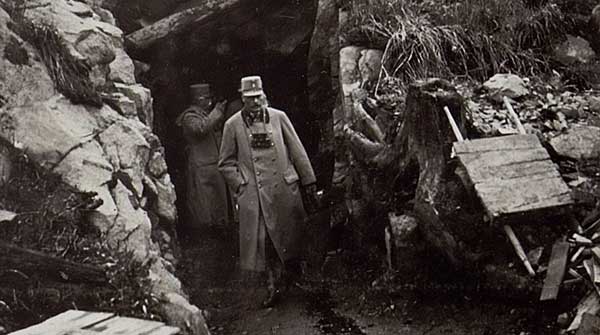The Battle of Vimy Ridge began in April 1917, and on April 1929, the Supreme Court of Canada issued its decision in the Persons Case
On April 9th, 1917, the First World War’s Battle of Vimy Ridge began. This battle is considered a significant moment in Canadian history, as it was the first time all four divisions of the Canadian Expeditionary Force fought together as a cohesive unit. Despite heavy casualties, the Canadians were able to capture Vimy Ridge from the German army, which had held the position for several years. The victory at Vimy Ridge is often cited as a key moment in Canada’s development as a nation, as it helped to establish Canada’s reputation as a capable military force on the world stage.
 |
| Related Stories |
| Easter 1917 marked a First World War turning point
|
| Pack up you troubles in your old kit-bag
|
| Did the Great War really create a distinct Canadian identity?
|
The battle was a significant event in the First World War as it was one of the largest and most successful military campaigns that Canada had ever undertaken. The Canadian troops fought against heavily-entrenched German forces in Vimy Ridge, which is a prominent geographical feature located in northern France. The battle lasted for four days and resulted in the Canadian troops capturing the Ridge, a feat that no other Allied force had been able to achieve.
The victory at Vimy Ridge is seen as a turning point in Canadian history, as it helped to establish Canada as a formidable military force on the world stage. The battle is often cited as an example of Canada’s strong sense of national identity, as it was the first time all four Canadian divisions had fought together under Canadian leadership.
***
On April 9th, 1929, the Supreme Court of Canada issued its decision in the Persons Case. This case involved five women who challenged the interpretation of the word “persons” in the British North America Act, which was the constitutional document that established Canada as a nation. The women argued that the word “persons” should be interpreted to include women, which would give them the right to be appointed to the Senate of Canada. The Supreme Court initially ruled against the women, but the case was later appealed to the Judicial Committee of the Privy Council in Britain. In 1929, the Privy Council ruled in favour of the women, stating they were indeed “persons” under the law. The Persons Case is seen as a key moment in the fight for women’s rights in Canada.
Prior to the ruling, women were not considered “persons” under the law and were therefore unable to hold public office or participate in many other aspects of civic life. The ruling helped to pave the way for women’s rights and helped to establish Canada as a leader in the fight for gender equality.
***
On April 9th, 1984, the National Film Board of Canada released the documentary The Times of Harvey Milk. This film tells the story of Harvey Milk, an openly gay politician who was elected to the San Francisco Board of Supervisors in 1977. Milk was a vocal advocate for gay rights and was assassinated in 1978 by a former colleague. The Times of Harvey Milk won the Academy Award for Best Documentary Feature in 1985 and is considered a landmark film in the history of LGBTQ+ cinema.
The release of “The Times of Harvey Milk” was a significant moment in the history of LGBTQ+ rights in Canada and around the world. The film helped to shed light on the struggles faced by the LGBTQ+ community in the United States and helped to inspire a new generation of activists. The film is often cited as an example of the power of documentary filmmaking to effect social change.
| Troy Media
© Troy Media
Troy Media is an editorial content provider to media outlets and its own hosted community news outlets across Canada.

